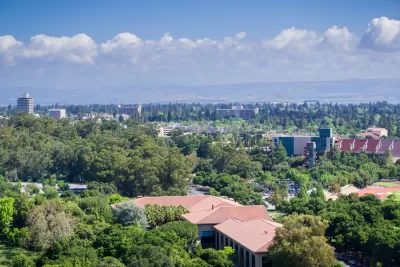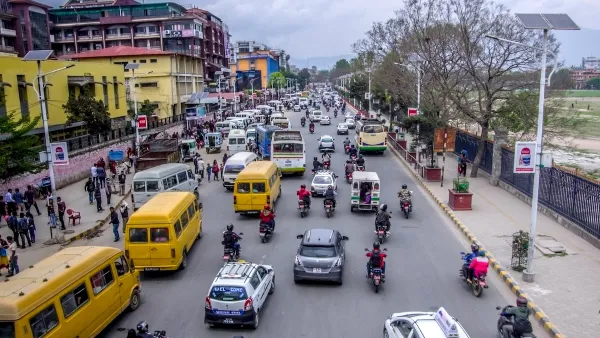A $1.1 billion donation to Stanford seeks to mitigate climate change. As impressive as that gesture is, the real solutions to climate change lie in hearts and minds around the world—and not in Palo Alto, California.

“I don’t doubt that an institution like Stanford will produce important work with those funds. And yet, the idea of fighting climate change by cloistering it in an ultra-exclusive institution, in a region that is already well versed in the ravages of climate chance, seems to miss the mark.”
“Dating back to the days of 'An Inconvenient Truth,' the state adopted a raft of laws and regulations designed to promote dense development. They include AB 32 (greenhouse gas reduction), SB 375, (dense development and coordination between land use and transportation), SB 743 (reducing vehicle miles traveled), and others—all of which take aim, in some way or another—at the carbon-intensive landscape that California built in the 20th century and on the types of fuels we use.”
“Despite having a darn good model of dense urbanism at the northern end of the San Francisco Peninsula, the cities of the South Bay exemplify what not to do. They rely on freeways and wide boulevards. They celebrate single-family homes and denigrate density. They price out almost all workers below executive level, forcing them to drive in or take infamous 'Google Buses' and the like. For people who deal in futuristic nano-scale technology, the carbon footprint of the typical Silicon Valleyite is more like that of a brontosaurus.”
FULL STORY: An Ivory Tower Solution To Climate Change

Planetizen Federal Action Tracker
A weekly monitor of how Trump’s orders and actions are impacting planners and planning in America.

Maui's Vacation Rental Debate Turns Ugly
Verbal attacks, misinformation campaigns and fistfights plague a high-stakes debate to convert thousands of vacation rentals into long-term housing.

San Francisco Suspends Traffic Calming Amidst Record Deaths
Citing “a challenging fiscal landscape,” the city will cease the program on the heels of 42 traffic deaths, including 24 pedestrians.

Defunct Pittsburgh Power Plant to Become Residential Tower
A decommissioned steam heat plant will be redeveloped into almost 100 affordable housing units.

Trump Prompts Restructuring of Transportation Research Board in “Unprecedented Overreach”
The TRB has eliminated more than half of its committees including those focused on climate, equity, and cities.

Amtrak Rolls Out New Orleans to Alabama “Mardi Gras” Train
The new service will operate morning and evening departures between Mobile and New Orleans.
Urban Design for Planners 1: Software Tools
This six-course series explores essential urban design concepts using open source software and equips planners with the tools they need to participate fully in the urban design process.
Planning for Universal Design
Learn the tools for implementing Universal Design in planning regulations.
Heyer Gruel & Associates PA
JM Goldson LLC
Custer County Colorado
City of Camden Redevelopment Agency
City of Astoria
Transportation Research & Education Center (TREC) at Portland State University
Jefferson Parish Government
Camden Redevelopment Agency
City of Claremont




























